2021 Audi RS e-tron GT review
Is this a Porsche Taycan Turbo S alternative or something quite different? Interesting times for the motor industry and also...
Firmly entrenched in all of Porsche model line-ups is the GTS. And in the 911 range, it is the most powerful of the 3.0-litre cars, the last stop before moving on up to the GT3 and Turbo variants. And these GTS cars have found fond favour, being fast and engaging but without the expense of the mega-money Turbos or the racer’s edge of the GT cars. On price, the GTS fits nicely between the Carrera S and the GT3, this rear-drive, C2 GTS setting you back $289,900. A C2S is $260,400, a GT3 is $337,000 while a Turbo S is $80k more expensive again. You can get your GTS in all the usual 911 flavours; C4, cabrio and targa, but the astute will stick with the RWD coupe. It’s also the only Carrera model you can order in NZ with a manual. Though very few will as the standard fit eight-speed twin-clutch ‘PDK’ is so very good.
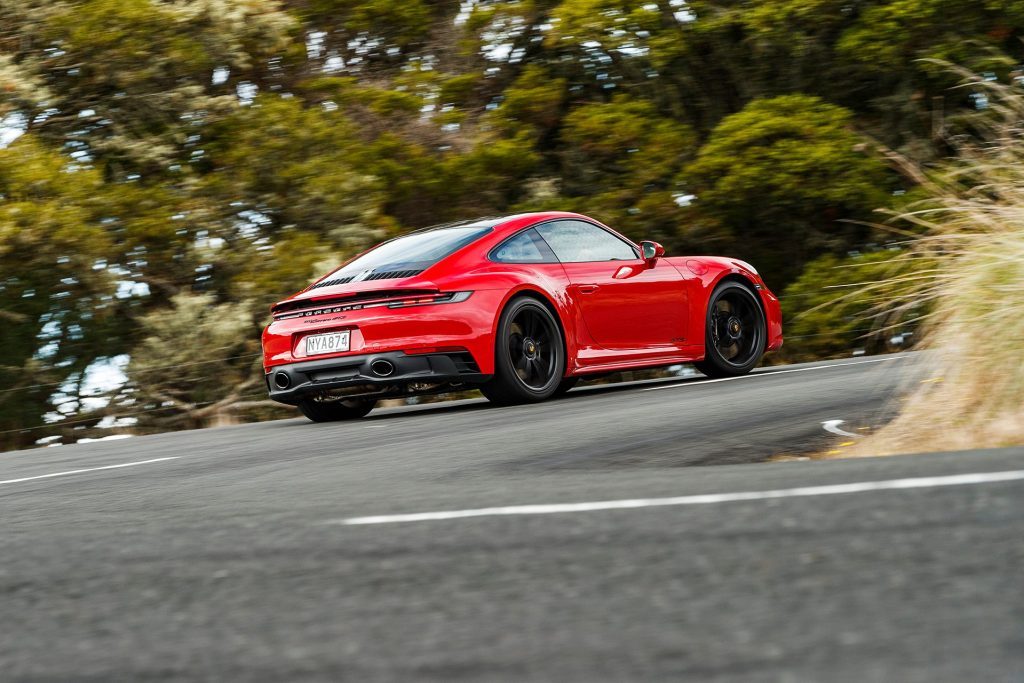
You could be forgiven for thinking the GTS is closer in concept to the GT3 but it has more in common with the Turbo. It’s blown for a start and it shares the Turbo’s suspension concept and brakes. With the latest iteration of the Turbo, Porsche sharpened its focus to be more sports car than Grand Tourer. And they nailed that brief so it bodes well for the GTS.
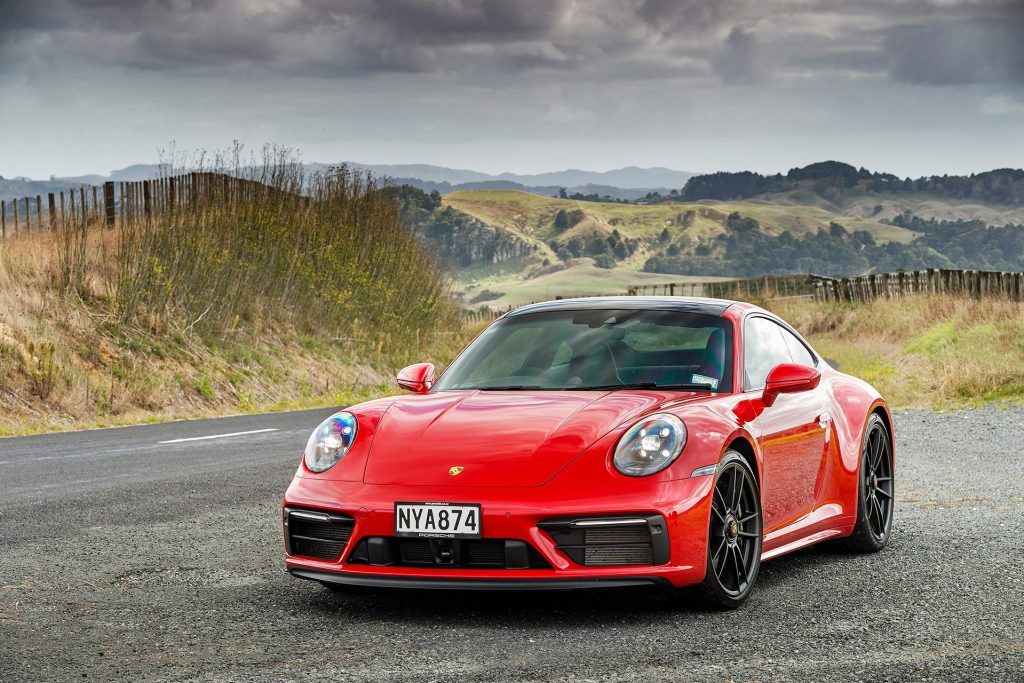
Here, the 3.0-litre twin-turbo flat six delivers 353kW (22 more than both the old GTS and the current Carrera S) and there are 570Nm made from 2300rpm through to 5000. Standard GTS fare includes a sports exhaust (loud mode included) and the Sport Chrono pack. The suspenders utilise the latest iteration of Porsche Active Suspension Management and the brakes are lifted from the Turbo with 408mm discs up front and six-pot calipers. Also making the grade, Porsche’s Torque Vectoring Plus with its electronically controlled, fully variable locking diff.
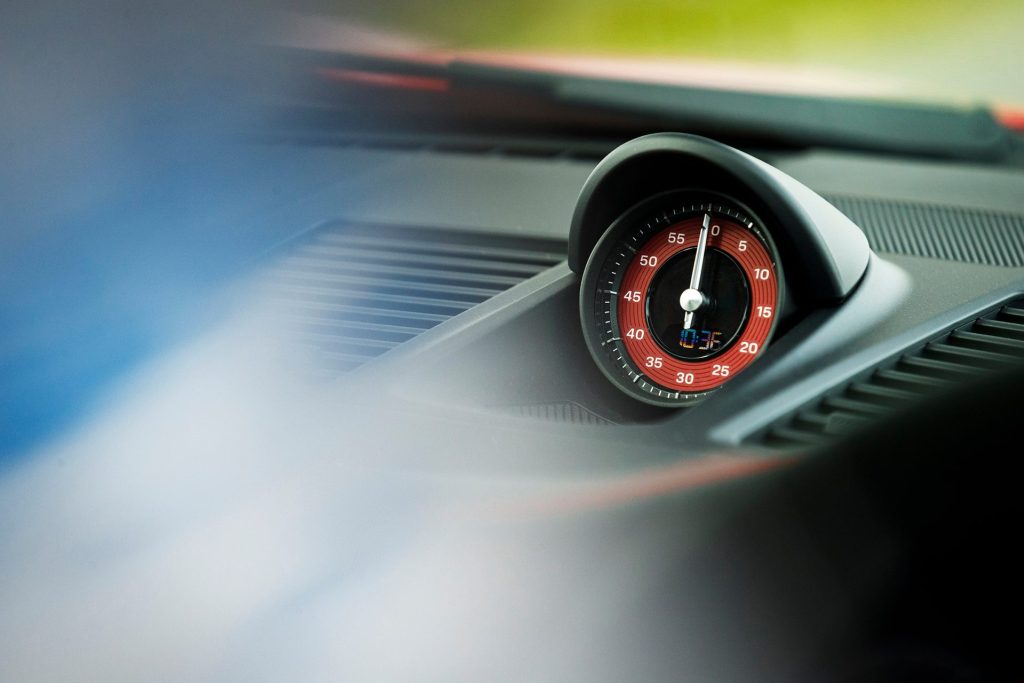
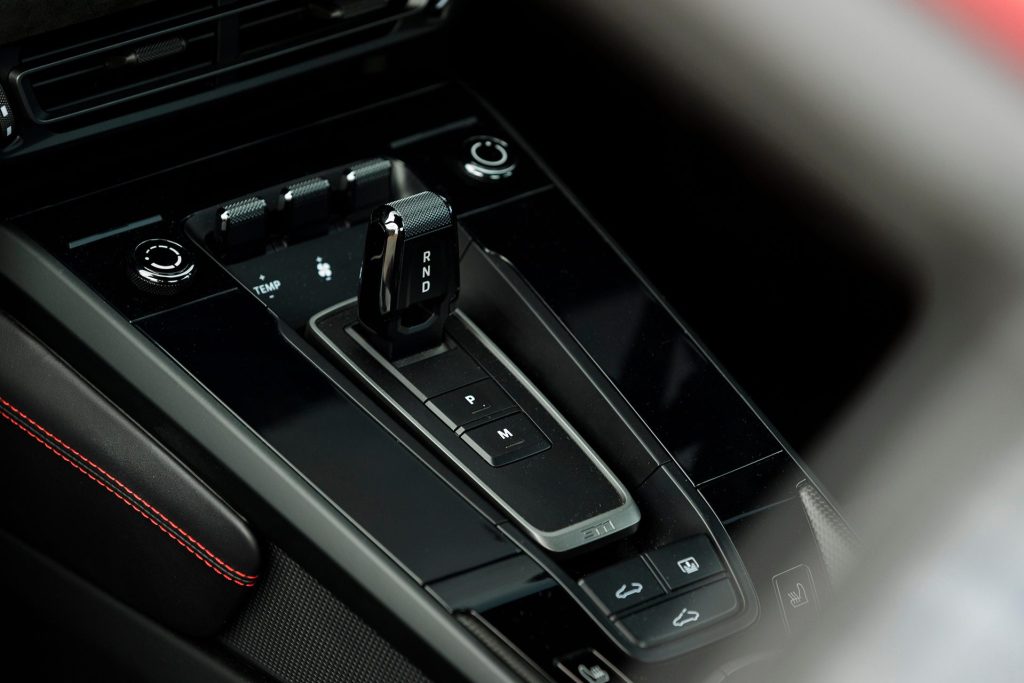
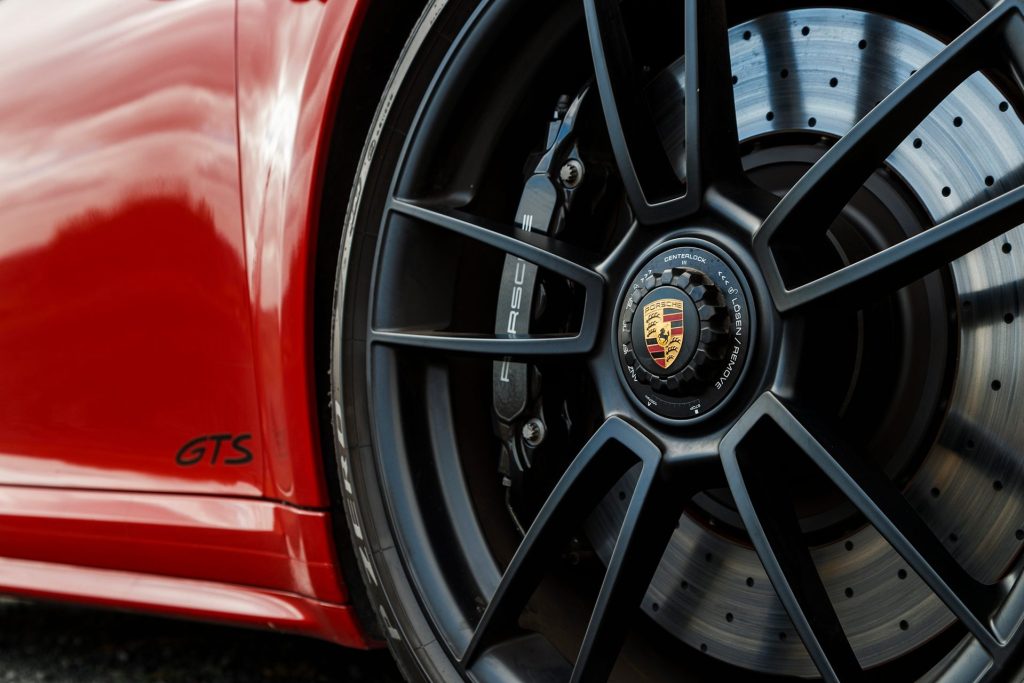
The last 911 I drove was the 427kW Turbo, a crazy good thing. This is a different experience, a tad more engaging for being rear drive. And fast enough; anything that cuts to 100km/h in 3.4sec (80-120 done in 1.9sec) isn’t hanging about. But it’s not rabidly quick like the Turbo and allows the odd chance to explore the engine’s full rev band without going hypersonic.
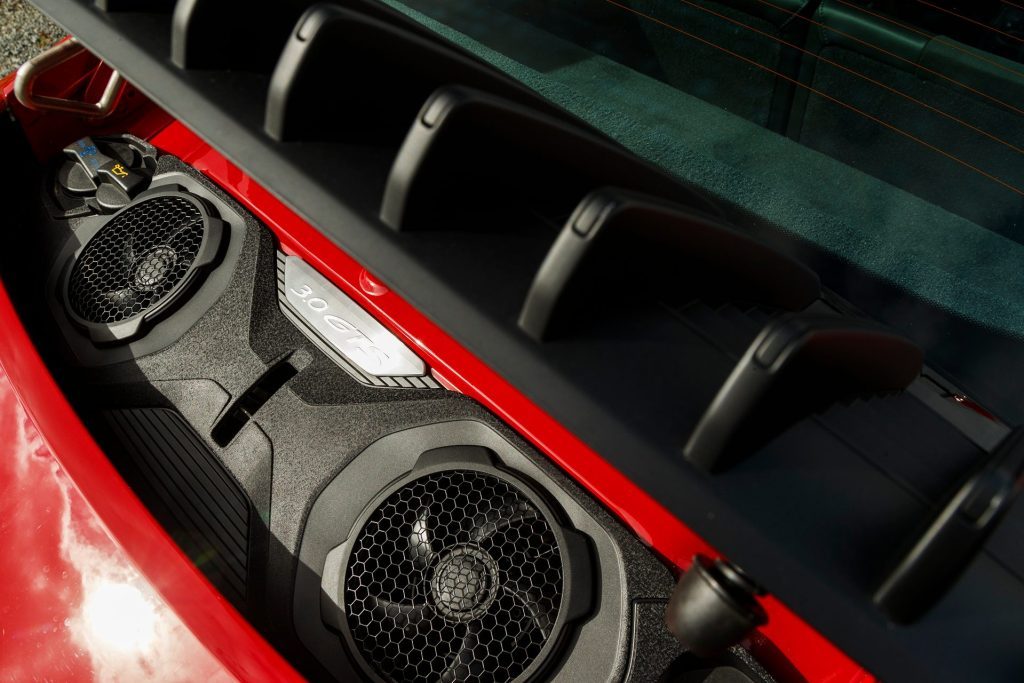
Porsche has perfected the 911’s driving position over the years. The 18-way adjustable Sports seat (a $5500 option unfortunately) can set you nice and low, the pedals are out in front and the standard-fit GT wheel (smaller in diameter) comes with power adjustment too. Part of the Sport Chrono pack is the drive mode selector slung off the steering wheel for easy mode switching. Sport we liked for everyday driving as it’s the easiest way to veto the idle/stop function and puts more pep in the GTS’s step. For back road sorties, the Sport Plus mode is well suited. Here you get the ultimate in engine and suspension response, with the PASM stepping up to its full attack mode. Sounds like a recipe for bump steer and a sore back but running it along a treacherous section of North Waikato tarmac, known for its bumps, dips and potholes as much as its abundant corners, the GTS proved every bit as compliant as it was controlled. Remembering the A stands for Active, and so the suspenders adapt to the torture you are subjecting them to, reacting quickly to bumps, soothing them admirably. It’s quite a feat for such a low riding machine on massive rims.
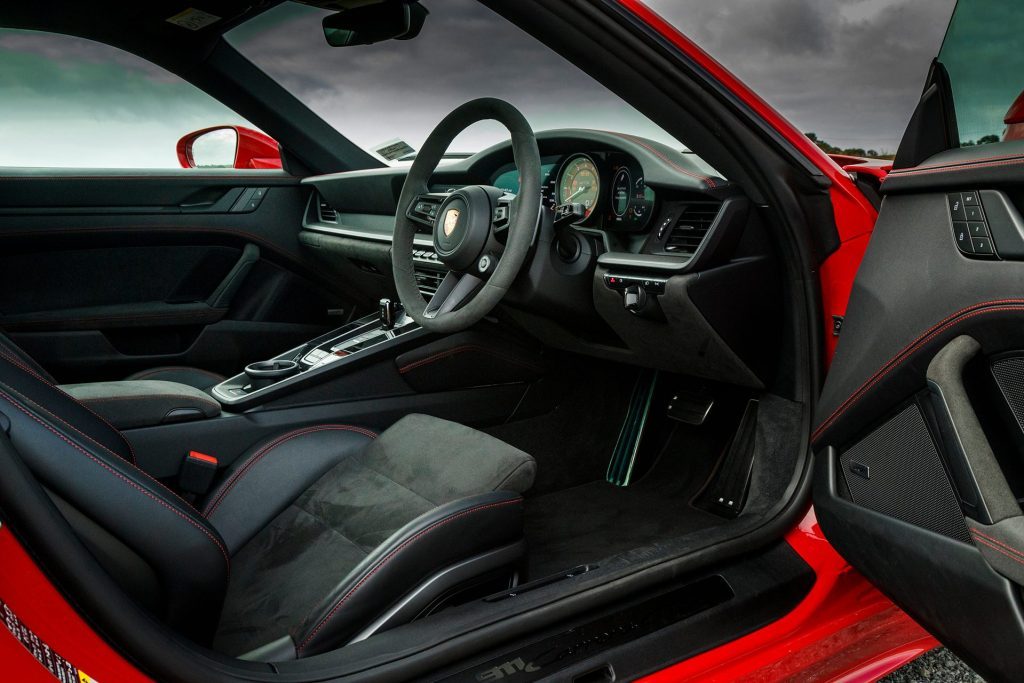
The steering is quick, incisive, and isn’t concerned with endless chatter. Rather, it speaks in a meaningful manner, loading up sweetly in the faster bends while remaining tactile in the tighter ones. This GTS flows magically over such roads; it doesn’t feel heavy, and for a car with such a rear weight bias, it feels delightfully balanced. The front end, unburdened by excess mechanical weight, can go a tad light when chasing curves uphill, but is usually locked on its apex target. A dab of the brake can help the 911 turn in better, the weight transfer helping add front-end grip, and then it really hooks into the bend. And there’s only ever a mere squeak of protest from the tyres through the tightest of corners. A bit of assistance from the right foot helps the rear rotate on the exit as that sets the locking diff into action, the Torque Vectoring function adding traction for a faster get away. The brake pedal is set to perfection with immediate bite and you’re straight into the thick of their tactile operation.
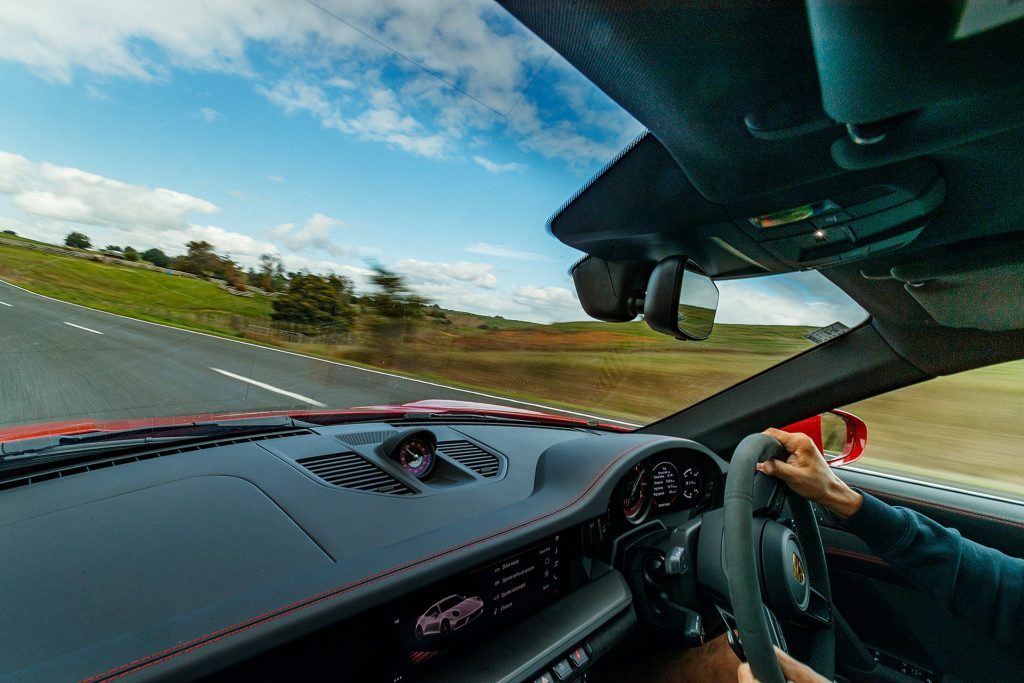
The transmission in the Sport Plus mode has telepathic gear selection. There are paddles but with eight ratios you tend to get a bit lost. The engine is rather flexible, being happy pretty much anywhere from 1000 – 7500rpm. Real thrust lies beyond 4000rpm, and that’s where the Sport Plus setting usually has you lingering. The turbo wastegate control is such that when you lift off for a moment, it can maintain boost, so that as you step back into it, the response is crisp, punchy. Being short stroked, the six spins readily from 4000 to 7500rpm where the PDK then snaps another gear to keep the GTS primed.
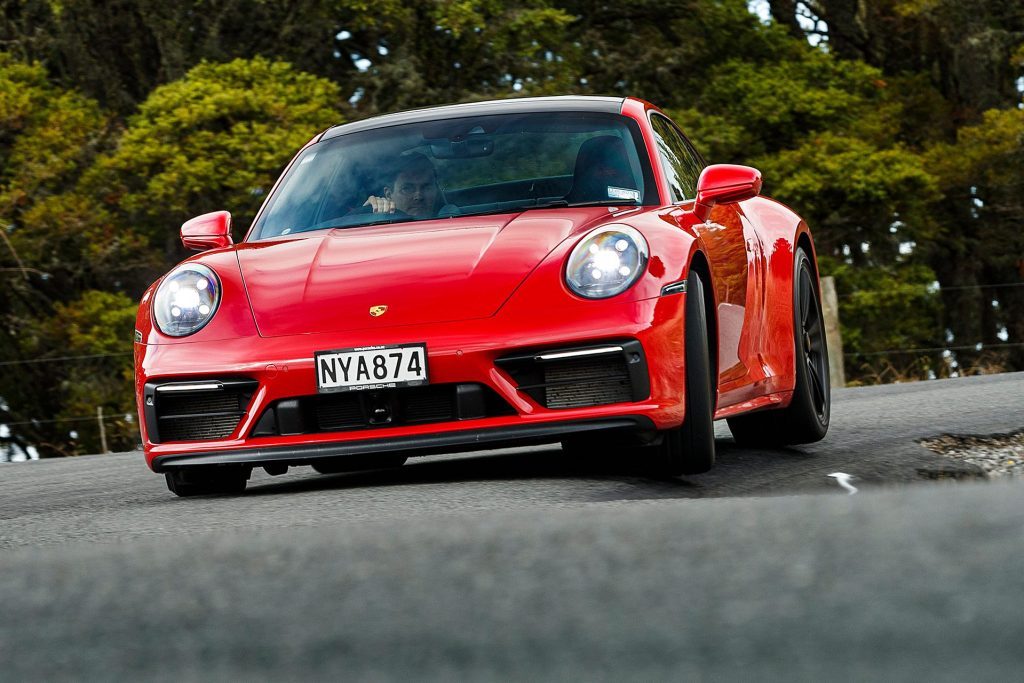
All 911s have rowdy tyres, the roar an unpleasant companion on every journey. They’ve pared back the sound insulation in the GTS so it’s persistent but with the sports exhaust set to blare, the flat six wail effectively cancels it out. The 911 soundtrack may have changed its tune over the years but it’s still a satisfying noise.
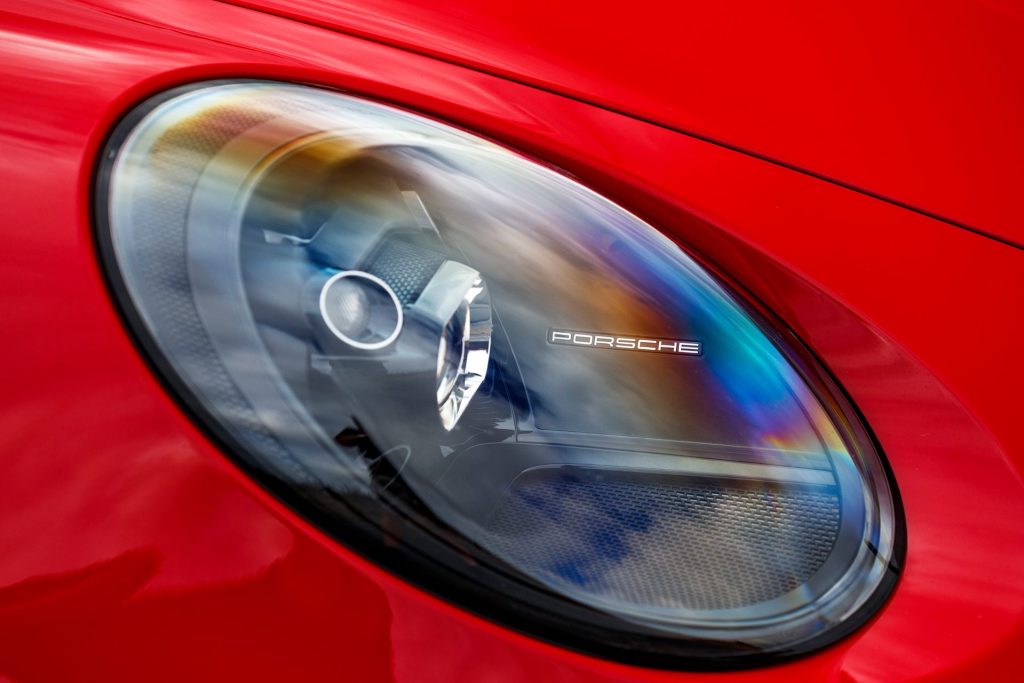
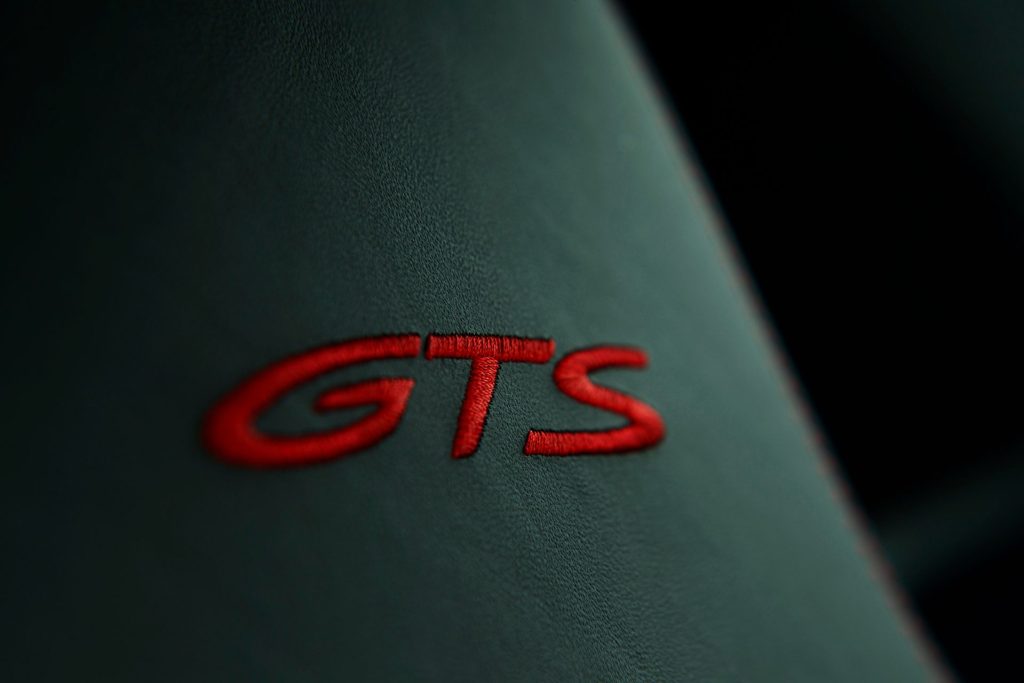
The 911 GTS is not a one trick stallion however. It’s something you could use on the daily, lifestyle permitting. Sure, it’s a small sports coupe, the boot up front short on space but you can fold those vestigial rear seats for extra storage. These spots are okay for younger school-aged kids, squeezing in with minimal whinging. And if you are keen, the 911 now has Isofix on the front seat and, along with airbag deactivation, you can put little ones in up front more easily. They’ve managed to find a few odd spots for storage in the cabin, your glasses, wallet and phone fill the centre console and if you like to stay hydrated on the go, the cup holders are an afterthought.
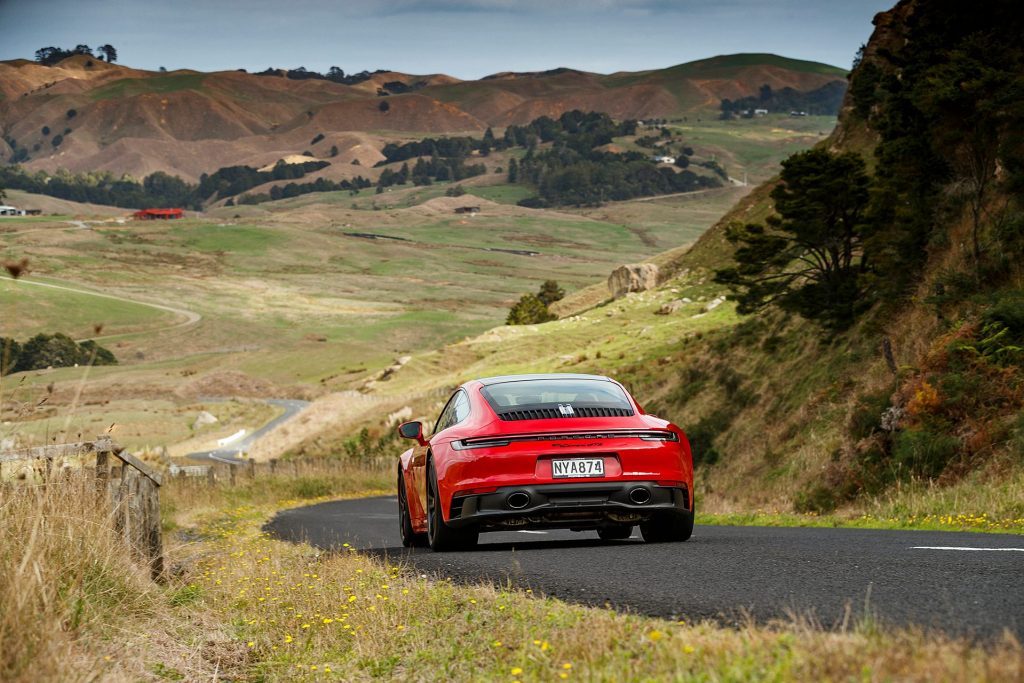
It’s quite easy to slip into the low-set saddle, the door opening generous, the sills not too wide, and the doors themselves aren’t cumbersome either.
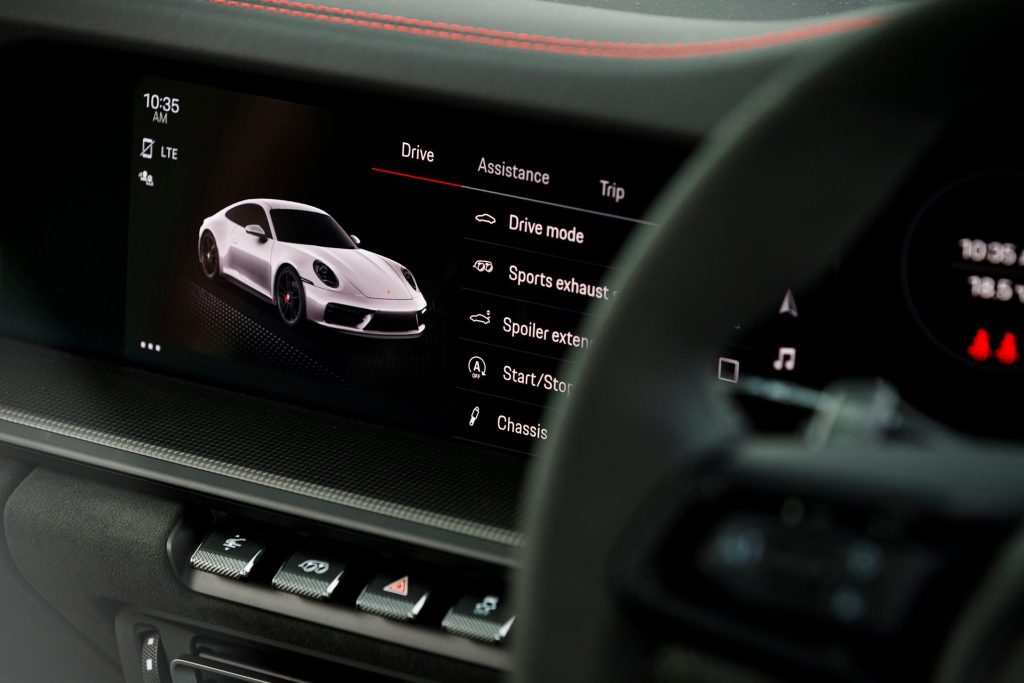
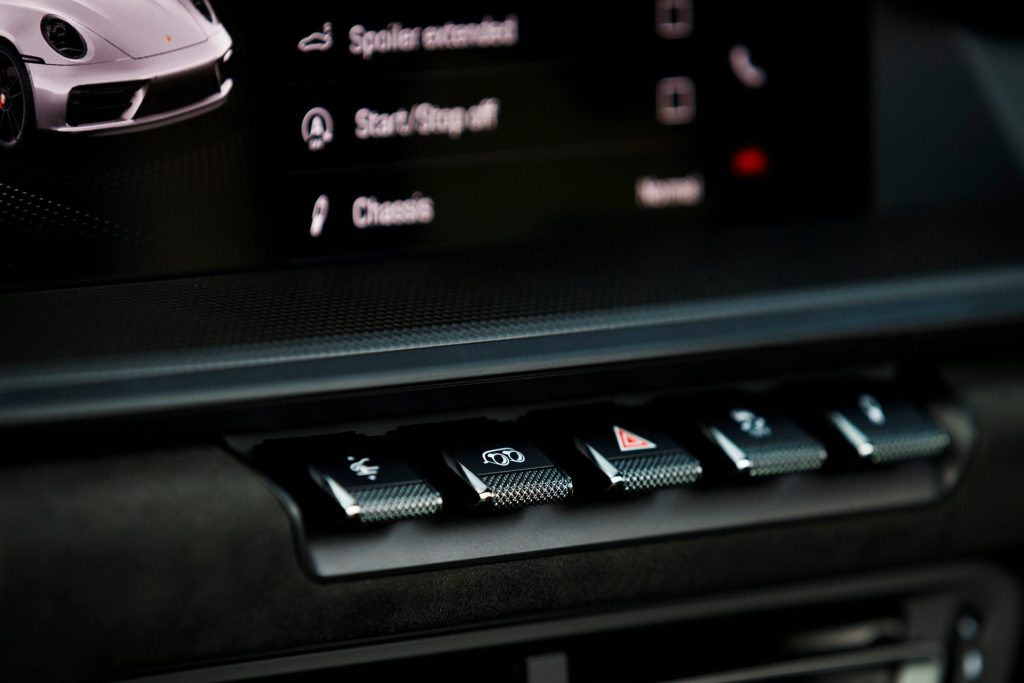
They have cleaned up the switchgear, the ventilation easy to use, while most functions are handled by the touchscreen, now packing Android Auto and more Apple streaming services.
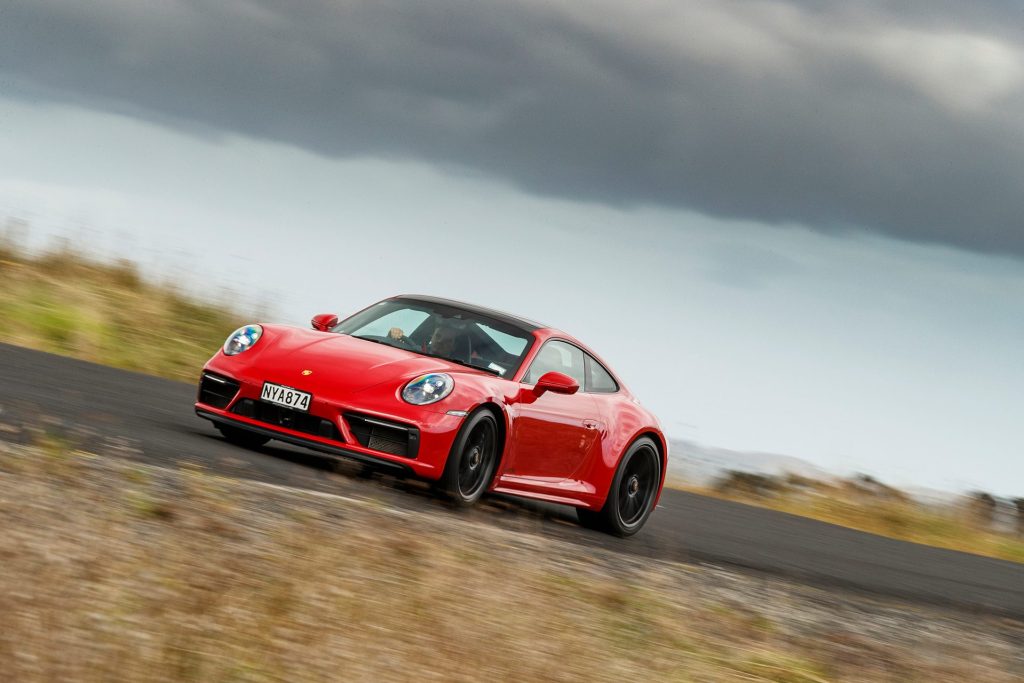
The PDK is a marvel. While it’s ace at handling a 5000rpm clutch dump using launch control and slamming ratios through at max attack, it’s equally as impressive driving to work. It’s not all cranky at slow speeds, the uptake smooth. Hill starts and reversing are refined too.
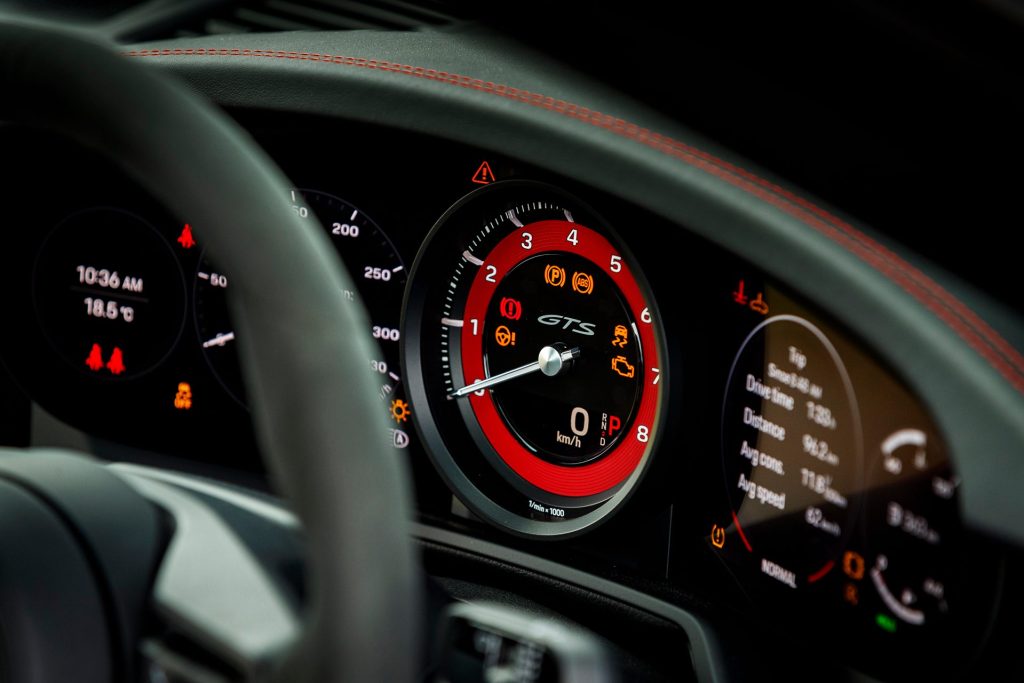
The GTS gets an around-view camera, handy as with any low slung sportster, your outward view is a tad restrictive. The town and around ride is okay for a sports coupe on 20s, while the turning circle is too, the steering light. There are a few odd vibrations from the engine when the trans selects a higher gear to save gas, churning at just 1000rpm in top at 100km/h for instance. Sport mode usually sorts that by locking out top gear. The active cruise is optional, and if you want traffic jam stop and go capability, Porsche charge extra again. This has a front lift system, something you’ll likely need as the GTS is riding lower than your usual 911, and its front and rear styling treatments are said to reduce approach and departure angles substantially. So there’s another $4082 you’ll need to spend. It does work quickly, and you can save frequently visited locations on the GPS for it to rise up automatically when you approach.
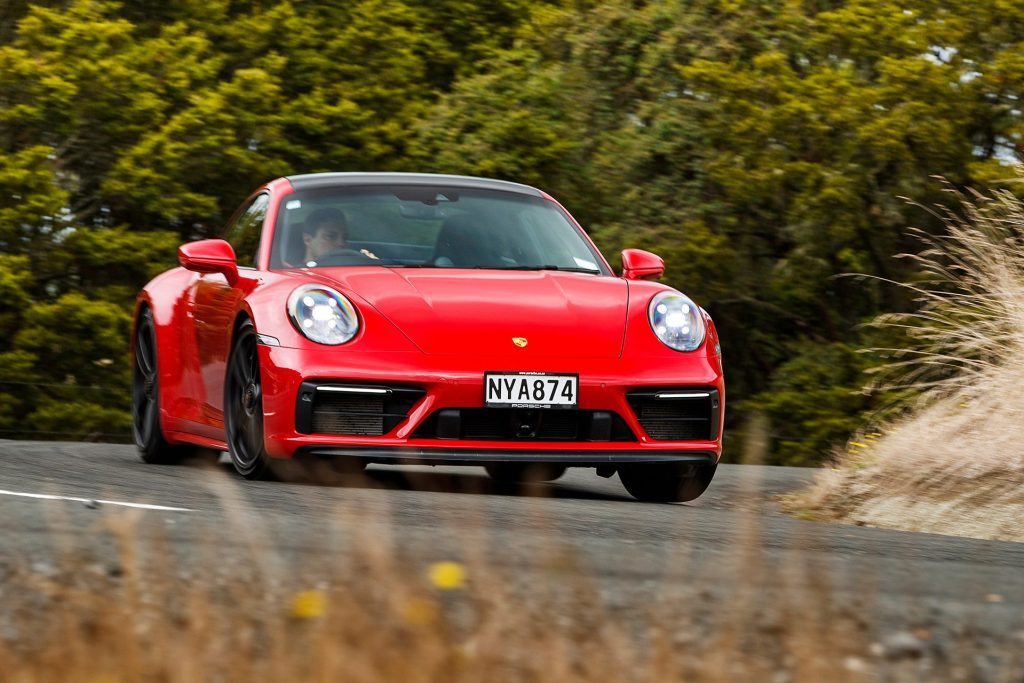
As to fuel use, we got up to 17L1/00km doing our darndest, but for the average day, something between 9 and 12L/100km seems likely.
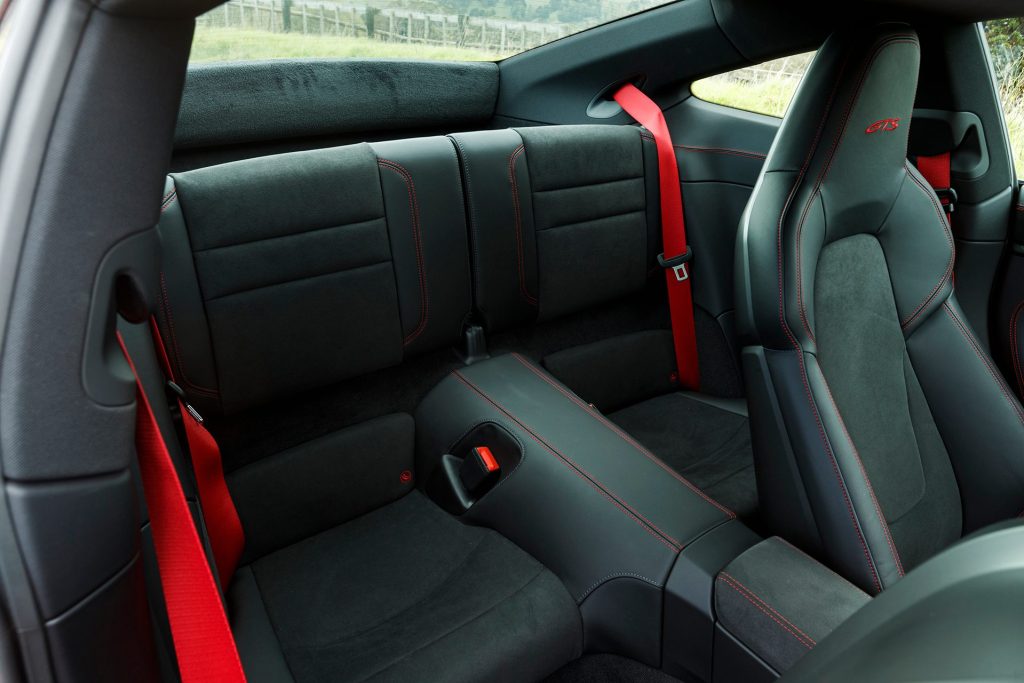
And so, this is another thoroughly complete package from Porsche, another great option in the 911 range. If you can’t stretch to the Turbo, you won’t be disappointed with this. And if you can’t wait for the supply-limited GT3, this is not a bad consolation option either, and something you’ll be happier with day-to-day.
| Model | Porsche 911 GTS |
| Price | $289,900 |
| Clean Car Discount | Fee + $4082.50 |
| Engine | 2981cc, F4, T, DI |
| Power/Torque | 353kW/570Nm |
| Drivetrain | 8-speed twin clutch, RWD |
| Fuel Use | 11.3L/100km |
| C02 Output | 257g/km |
| 0-100km/h | 3.42sec |
| 80-120km/h | 1.92sec (105m) |
| 100-0km/h | 33.20m |
| Stability systems | ABS, ESP, TV |
| Safety | AEB, ACC, BSM, AHB |
| Luggage Capacity | F-132L R-264L |
| Service intervals | 12 months/15,000km |
| Warranty | 3 years/unlimited km |
| ANCAP rating | not yet rated |
| Weight | 1545kg (claimed) |
You may also like…
Is this a Porsche Taycan Turbo S alternative or something quite different? Interesting times for the motor industry and also...
BMW’s latest EV is the iX, a genre-busting machine with styling that evokes much head scratching. But for those who...

